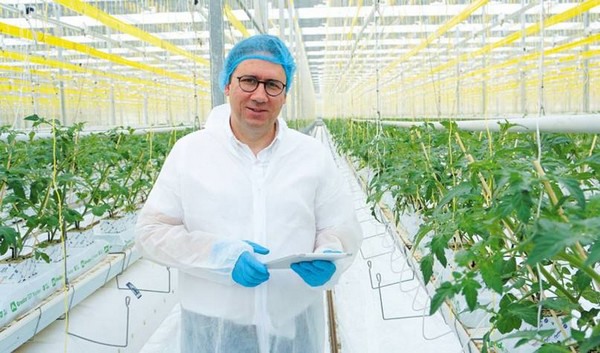Combining data and plant science is more relevant than ever. If we apply it in the correct way, we could potentially grow fruits and vegetables more efficiently and sustainably, but how do you combine plant and data science?
Nearly everything related to plants, their growth and the rootzone as well as climate conditions can be collected as usable data. This can be done manually, which is time-consuming and prone to errors, or via high tech systems such as sensors and images. There is so much data available, but what to do with it? And how do you combine the best of both worlds, using valuable insights from plant science and data science within the greenhouse?

Plant science vs. data science
Plant science dates back to ancient times, but data science is relatively new. Plant science is a classical science involving the plant physiology, genetics and the growing of the crops. It’s structured and systematic. On the other hand, data science is the science of extracting useful and actionable knowledge from raw data. Data science can be seen as more of an art form, without set rules.
What brings them together is that they both make use of the latest technology and contain a strong research element. Data science can be combined with almost any science or domain, such as medicine, finance, astrophysics, and so on. When data science practices are combined with dynamic plant science, magic happens. The grower has more reassurance and can do more while using less (water, fertilizer and chemicals). This combination can give us a better crop quality, more yield, and more efficiency in the greenhouse.
How to combine plant and data science
Since this practice is fairly new, there are many misconceptions and assumptions about combining plant science with data science and the introduction of new technologies in the greenhouse. Below Grodan shares a main misconception (and truth).
Misconception: “My gut feeling is accurate. I don’t need to use new technologies and apply data science in my company"
Truth: "There’s no question that data and AI could be very helpful for a company: smart algorithms can effectively identify correlations and data technology has the ability to record historical data. However, you need a good combination of plant science and data science. This means that the growers’ expertise (green knowledge or the green thumbs) need to be taken into account. The predictions, suggestions and recommendations are merely data driven support. I like to use the metaphor of a pilot flying a plane. Much of a pilot’s work is currently done by a computer. However, the pilot is still essential for making the actual decisions and taking informed decisions. Even the most successful growers can use data driven insights, data, predictions from time to time. We see more often that different greenhouse companies apply data science to improve the cultivation strategy."
For more information: Grodan
Grodan
www.grodan.com

